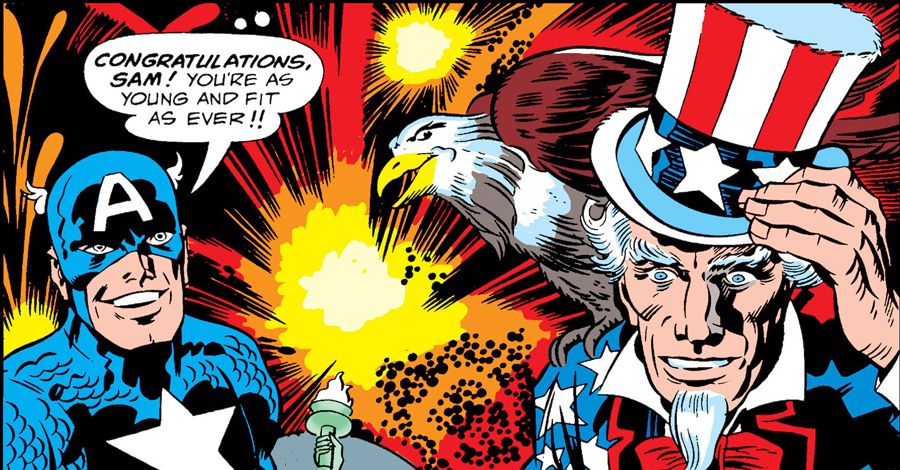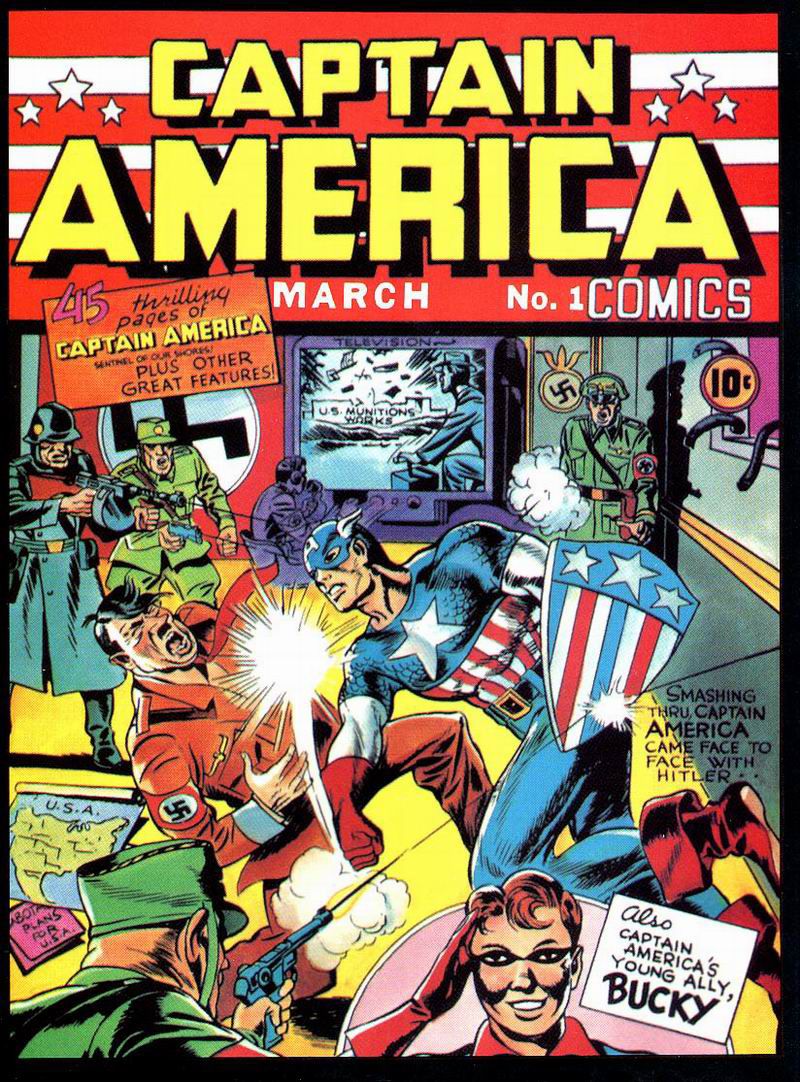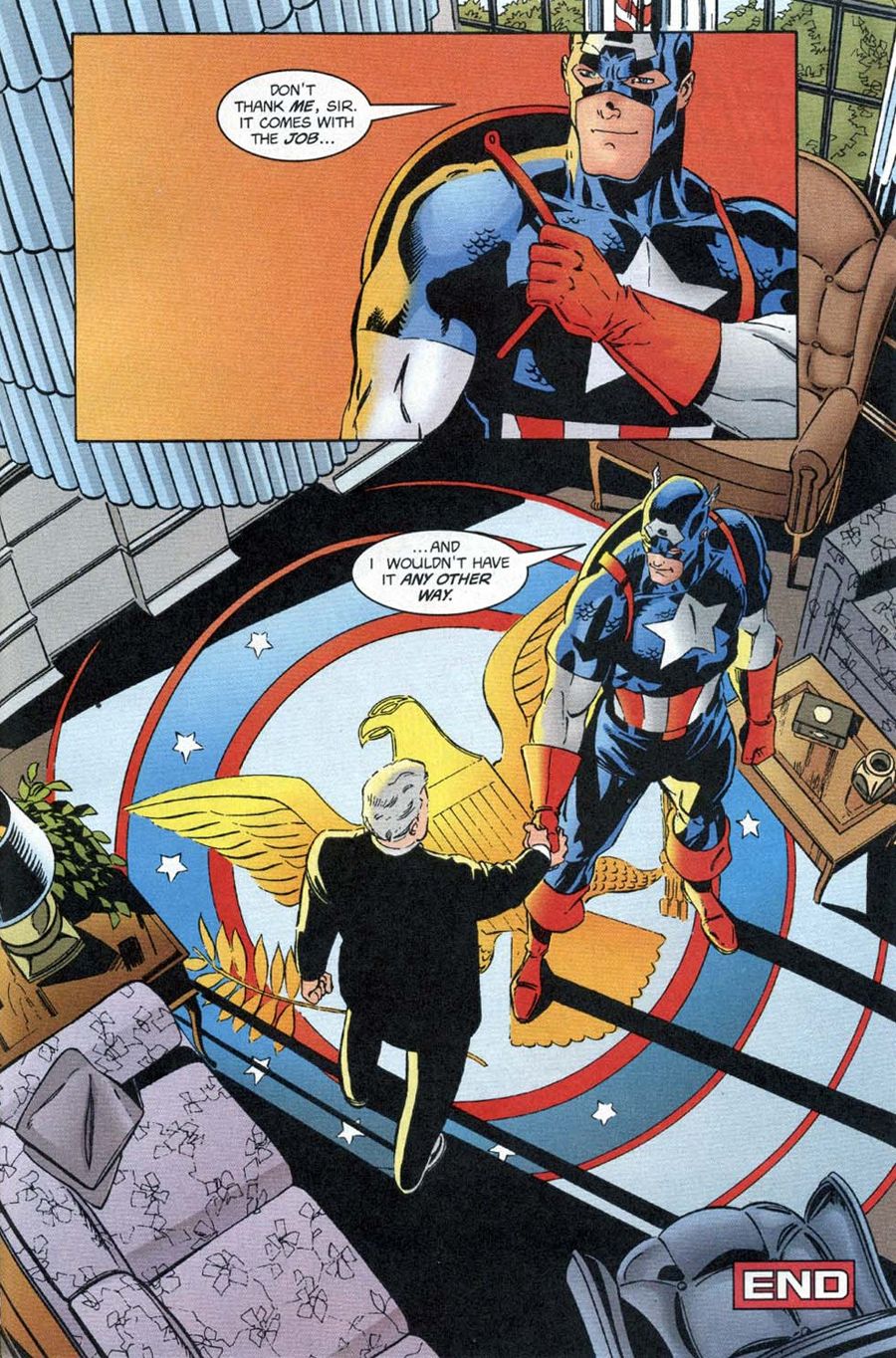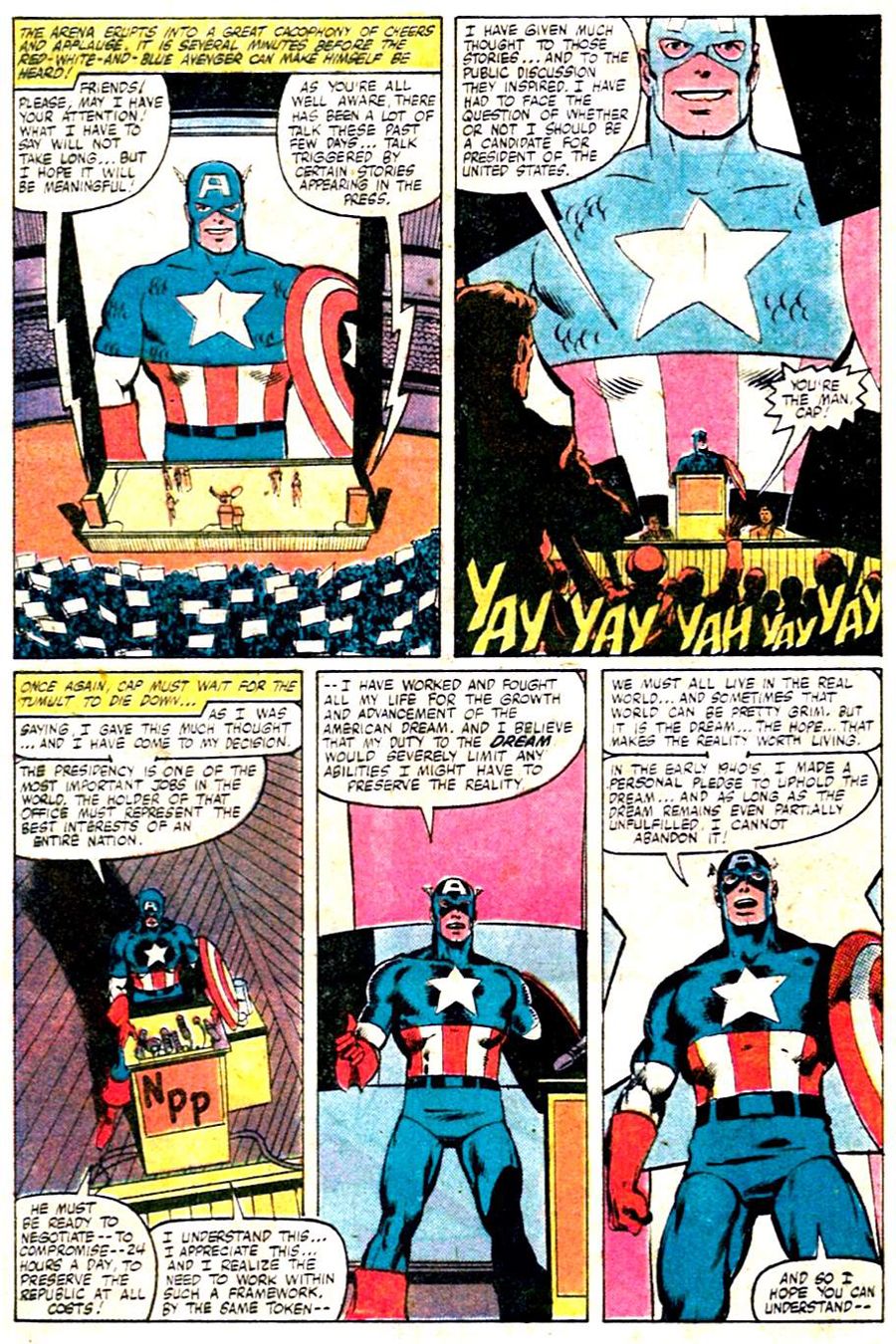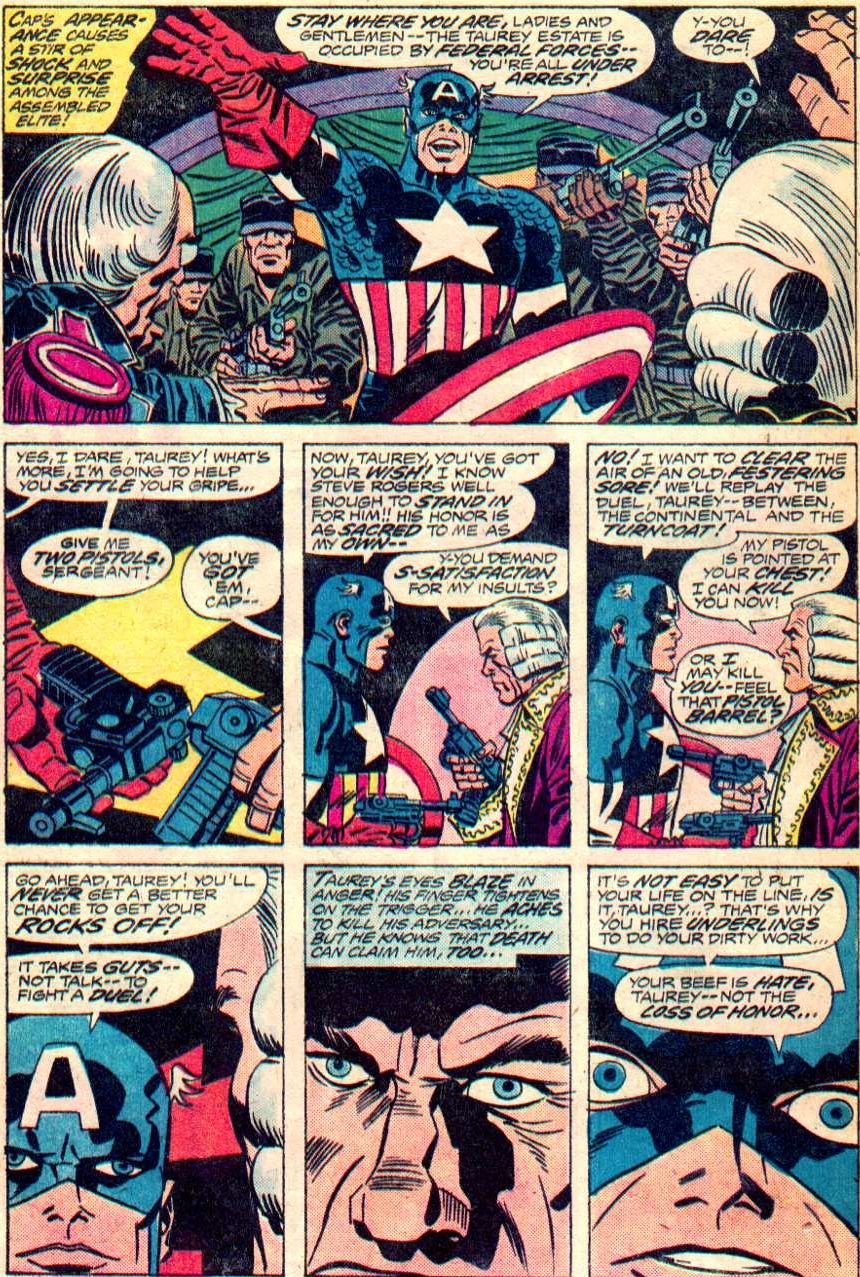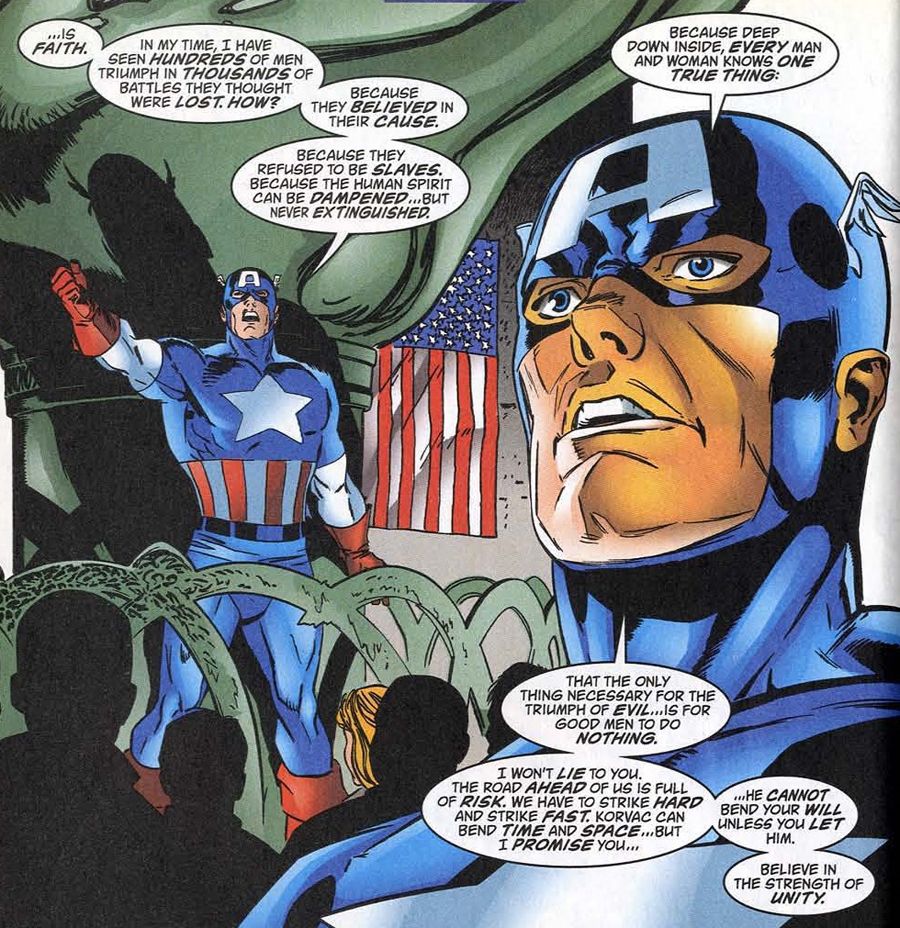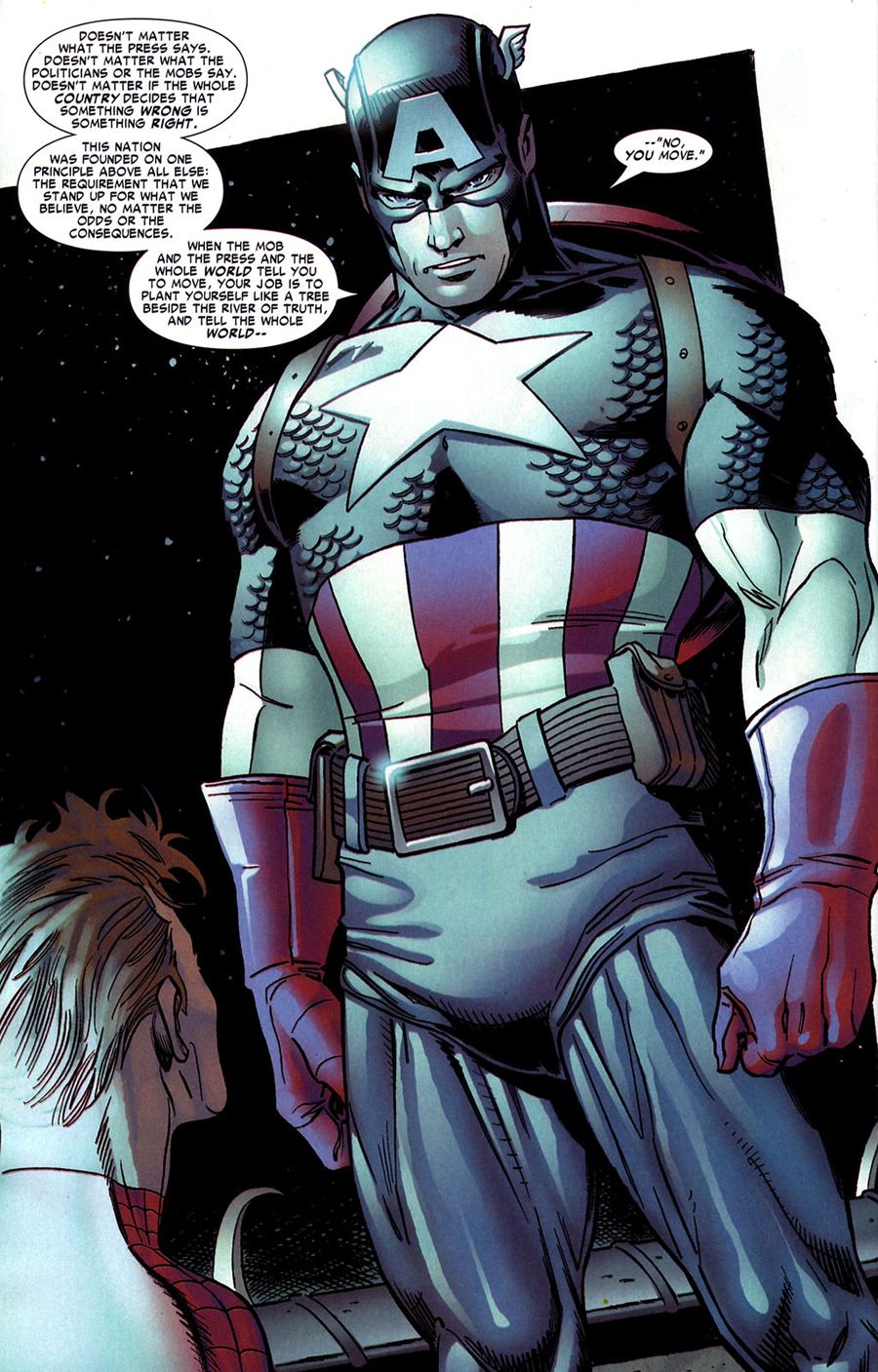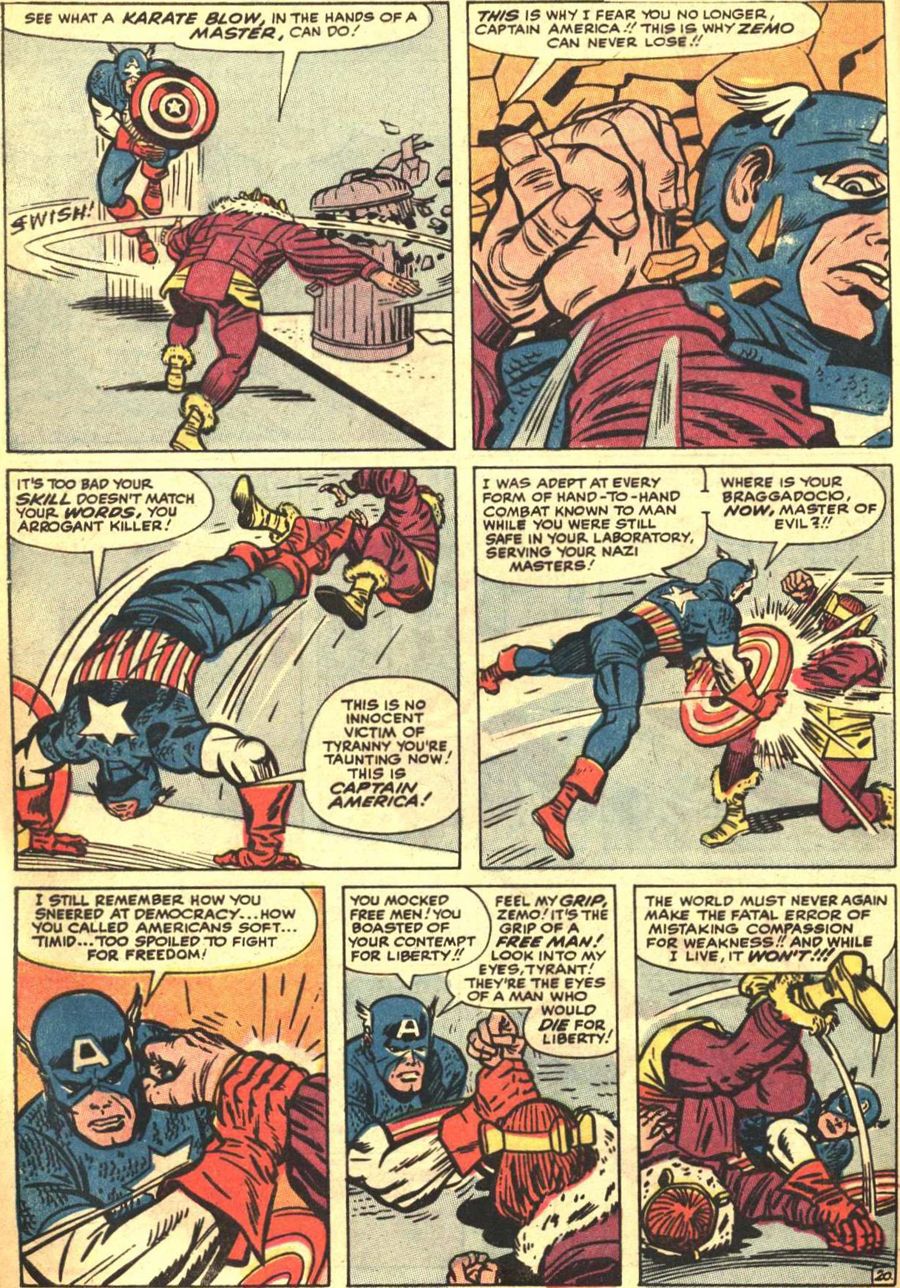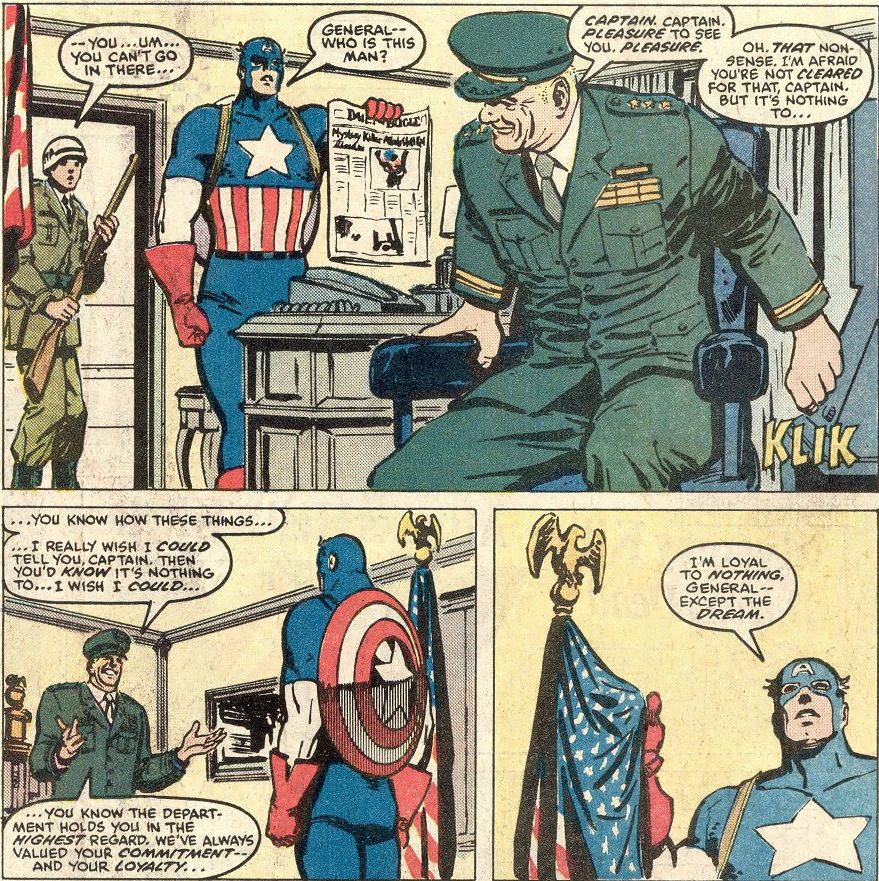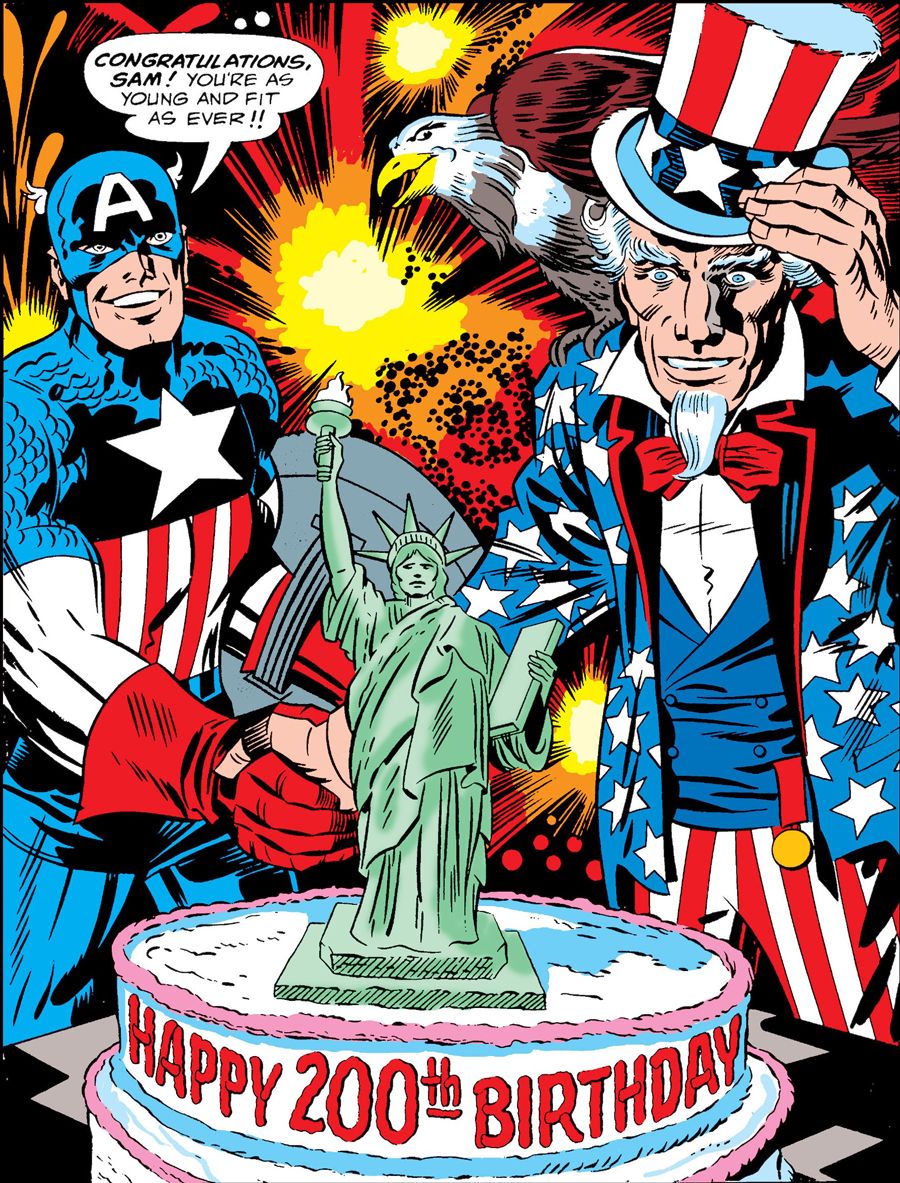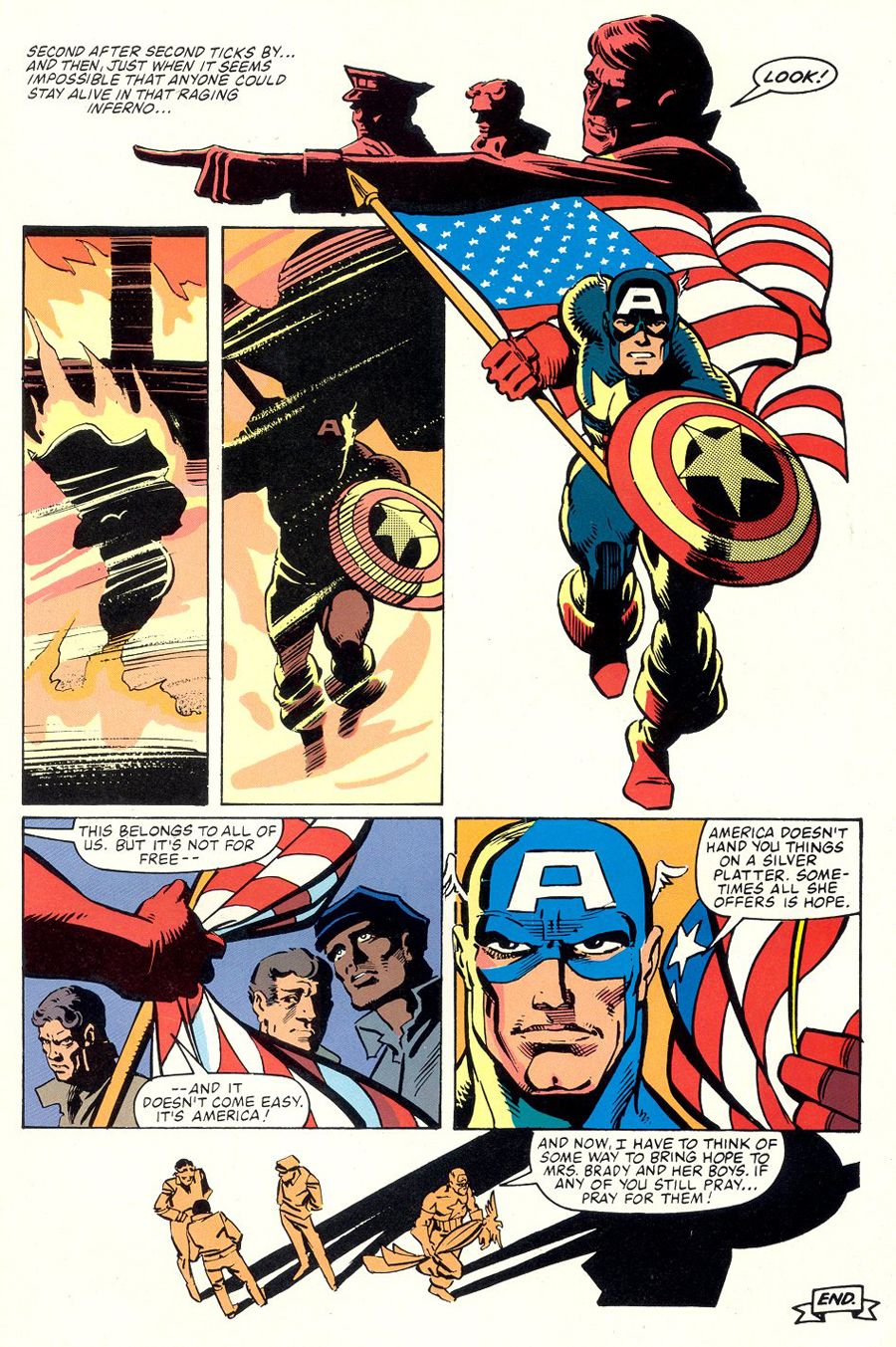As we celebrate the Fourth of July weekend here in the states, let's take the time to acknowledge the all-time greatest patriotic superhero: Captain America. While he may be a member of Hydra at the moment due to some Cosmic Cube-induced shenanigans, Steve Rogers has still provided some of the most patriotic moments in comic book history. With a 75-year legacy at Marvel Comics, here are Captain America's 10 greatest "Proud to be an American" moments!
RELATED: INTERVIEW: Spencer Declassifies "Captain America: Steve Rogers'" Hydra Secrets, Cosmic Connections
10 The Cover to "Captain America Comics" #1
Joe Simon and Jack Kirby sure knew how to draw attention to a comic book. The very first issue of "Captain America Comics" was released in December 1940, a full year before the United States entered World War II. The US wasn't actively at war with Nazi Germany, but you wouldn't know it by the cover of "Captain America Comics" #1, as Jack Kirby drew he and Simon's new creation punching out the leader of Germany, Adolf Hitler. Heck, the first cover proved so popular, that they attacked Hitler on the cover of the second issue, as well. (The first issue to feature Captain America's famous round shield!) Simon and Kirby received death threats over their anti-Nazi statements, leading Fiorello La Guardia, Mayor of New York City, to offer them police protection.
9 Serving His Country, Even After His Country Turned on Him
In "Captain America" #450 (by Mark Waid, Ron Garney and Scott Koblish), Captain America was branded a traitor when information known only to him was used to compromise the United States military. With no defense as to how the information was released, Cap had to accept being exiled from the states and stripped of his costume and his shield. Ultimately, while working in Europe as a rogue agent, Cap was able to prove his innocence just in time (in "Captain America" #453, by Waid, Garney and Koblish) to save the United States nuclear launch codes from being stolen from President Bill Clinton by the evil Machinesmith (who used his technology to read Captain America's mind and steal the information).
After realizing that Machinesmith had then transferred his consciousness into the "nuclear football" containing the codes, Cap realized that he had to explode said "football." He did so, and there's an amazing sequence where Clinton saluted Captain America and Cap saluted back through the flames. Then, at the end of the issue, Clinton welcomed Cap back and apologized for not only doubting him but for the future burdens that the role of Captain America was sure to place upon Cap. As he shook the President's hand in the Oval Office, Cap proudly noted that he wouldn't have it any other way.
8 Placing the American Dream Over Personal Ambition
In the classic "Captain America" #250 (by Roger Stern, John Byrne and Joe Rubinstein, based on an idea by Roger McKenzie and Don Perlin), Captain America was given the opportunity to run for the President of the United States. Throughout the issue, he contemplated the possibility, with his fellow superheroes giving him their opinions on what he should do. In the end, he explained to the people that as much as he respects the office of the President, he spends so much time defending the American Dream in his own way that he could not devote as much time as the office of the Presidency deserves. Cap placed his devotion to the American Dream over any personal ambition he might have to become the President.
7 Offering to Duel a Royalist Trying to Undo US Democracy
In Jack Kirby's return to the pages of "Captain America" as artist and now sole writer, his first arc involved the "Mad Bomb," a device that could turn people insane. As it turns out, William Taurey was the leader of a group known as the Royalist Forces of America, and their goal was no less than revert the United States to British Rule. Taurey's plan was to use a series of Mad Bombs to drive the American people insane. In "Captain America" #200 (by Kirby and inker Frank Giacoia), Taurey believed that he and his forces have set off a massive Mad Bomb in Philadelphia that would end democracy once and for all.
Unknown to him, Falcon had successfully led S.H.I.E.L.D. agents to stop the bomb. Captain America, meanwhile, went to confront Taurey. Tuarey's ancestor had been killed by an ancestor of Steve Rogers in a duel when Rogers managed to save General George Washington from Taurey revealing Washington's location. Taurey had carried around pistols, constantly telling people that some day he would hunt down a descendent of Rogers and gain his vengeance. Captain America decided to call his bluff. He told Taurey that he would stand in for Rogers, but in the end, Taurey folded, as Cap knew he would.
6 Inspirational -- Even in the Future
In "Captain America" #18 (by Mark Waid, Lee Weeks and a host of inkers/finishers), Captain America has followed Michael Korvac to the future -- a future where Korvac, using the powers of the Cosmic Cube, has "saved" Earth from the invading Badoon by taking it over for himself. He allowed Captain America to travel with him to the future and to routinely try to form a resistance to Korvac. Each time Cap tried to lead a rebellion, Korvac would defeat him and then reset the timeline and let Cap try again (while maintaining the memories of his past failures).
Cap gave some rousing speeches to the people of Earth to rally them around him. In the end, Cap's words were so powerful that he ended up convincing Korvac's robot underling to take up arms against Korvac. This was too much for Korvac and he ultimately reset back to the past where he originally gained the Cosmic Cube powers and Cap was able to change the past to stop Korvac from ever coming to power. Without Korvac, the people of Earth had to fight against the Badoon themselves, but the robotic being, Primax, was so inspired by Cap that he became the new Captain America of Earth. Now that's inspirational!
5 "No, You Move."
In "Amazing Spider-Man" #536 (by J. Michael Straczynski, Ron Garney and Bill Reinhold), Spider-Man had chosen to break from Iron Man's side during the superhero Civil War, and had even given a passionate speech on national television arguing against Iron Man's position. He then met up with the leader of the superhero resistance, Captain America, and he asked Cap how he was able to stand up to the government. Cap explained that he first really learned about patriotism in a book he read as a child by Mark Twain that explained the power and responsibility of being part of a republic.
Cap further noted that it is our responsibility to stand up for what we believe, even if the rest of the world is telling us that we are wrong. Essentially he believes that you have to plant yourself like a tree and tell the rest of the world, "No, you move."
4 The Grip of a Free Man!
In "Avengers" #6 (by Stan Lee, Jack Kirby and Chic Stone), the Avengers first ran afoul of the newly formed Masters of Evil. Captain America was matched up against the leader of the group, Baron Zemo, the former Nazi who was responsible for the bomb that killed Bucky during World War II (or so Captain America believed at the time). With Captain America revealed to still be alive, Zemo became obsessed with his former foe and helped form the Masters of Evil to destroy Cap.
When the two men met in hand-to-hand combat, Zemo mocked Captain America's empathy, believing it to be weakness. Cap, though, retorted (as he defeated Zemo in their fight) that Zemo should never mistake compassion for weakness and that he should feel his grip -- the grip of a free man -- and that Zemo should look into his eyes, the eyes of a man who would die for liberty. It's a wonderfully moving speech written by Stan Lee.
3 Captain America's True Loyalty
In the conclusion of Frank Miller and Davis Mazzucchelli's epic storyline "Born Again," in the pages of "Daredevil" #233, Captain America discovered the existence of Nuke, a psychotic super-soldier who appeared to be part of an some kind of extension of Project: Rebirth, the project that led to Captain America's creation. As it turned out, a general owed Wilson Fisk, the Kingpin of Crime, a favor, and paid it back by sending Nuke into Hell's Kitchen to kill Matt Murdock. Instead, it forced Murdock to take up his Daredevil identity again.
It was during the battle in Hell's Kitchen that the Avengers showed up and Cap realized that something was the matter. He confronted the general, who tried to play upon Captain America's loyalty to the United States government. Captain America rebuked him and, in a classic sequence, pulled out the American flag and pledged his loyalty to the American Dream.
2 A Patriotic Trip Through American History
In the classic 1976 over-sized one-shot "Captain America's Bicentennial Battles," Jack Kirby wrote and drew (inked by a variety of big name Marvel artists of the era) an epic tale of Captain America being sent through time and space in search of what makes America great. Cap met Benjmain Franklin, Geronimo, John Brown, John Sullivan and many more as he traveled throughout American history, even briefly seeing the future -- and battles being fought on the moon.
In the end, after seeing all these legendary people and experiencing major events like World War I, the Great Chicago Fire and the Great Depression, Cap's journey ended when he saw a poor young student studying tirelessly. Cap realized that the true essence of America is the people who just hunker down and get stuff done. Cap then spread this ideal to a group of schoolchildren, letting them know that they could be whatever they wanted to be, in a touching tribute to the United States. Plus, it ended with a pin-up of Cap and Uncle Sam shaking hands in front of a giant 200th birthday cake for the United States, so it was already guaranteed to be awesome.
1 "We the People"
In "Home Fires," a short story in "Marvel Fanfare" #18 (by Roger Stern, Frank Miller and Joe Rubinstein), Captain America was investigating a series of arson cases in a New York City neighborhood caused by a mysterious terrorist group known as "We the People," who were demanding six million dollars from the government to stop their fires. While Cap was canvassing the neighborhood via rooftop, he saw a "typical" American family and was jealous of them. We then saw that the head of that family was actually the head of the organization, a working class group sick of the economic downturn. One of their members was even a cop!
When the government ignored their demands, they then burned down a nursing home and one of their residents lost her life to the fire. Captain America finally tracked the ringleader down and confronted him in his home. The man's son attacked Cap, which is when Cap realized that the family was the same one he saw earlier that inspired his feelings of jealousy. He forced the man, Brady, to take him to the rest of the group -- who were willing to go quietly, but Brady instead decided that he wasn't going to go to jail and instead set the building they were in on fire, killing himself. Cap saved the others but then went back into the burning building to save the American flag that was inside. When he returned with the flag (in an epic Miller/Rubinstein panel), he gave a great speech about what the flag symbolizes -- hope.
Happy Fourth of July!

